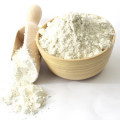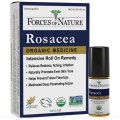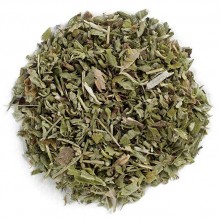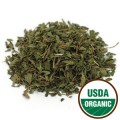 Loading... Please wait...
Loading... Please wait...- Home
- About Us
- Shipping, Returns & FAQ's
- Contact Us
-
For Your Information
- Canadian Customers Have a Choice if Shipping Via UPS
- Aura Cacia Homemade Aromatherapy Recipes
- Bella Nella Altered Art & Paper Crafts Blog
- Forms of Herbal Preparations
- Laundry Tips To Conserve Energy Blog from The Laundress
- The Story of Frontier Natural Products Co-Op
- Sovereign Silver Hydrosol and Aloe Protocol Stops Downward Spiral of Gut Dysbiosis
- Disclaimers
- Recommended Links
- RSS/Recent News
- The Story of Typhoon Housewares
- Reviews/Testimonials
- Raw Ingredients for Mfg
Catnip Leaf & Flower Conventional/Organic Bulk
Product Description
Also known as catmint, catnip is a botanical cousin to peppermint and spearmint. It's slightly sweet, minty profile is a nice indulgence in teas, fruit salads and Mediterranean dishes.
Because mice and many other pests strongly dislike the plant, dried catnip is a natural critter deterrent.
A terpene compound in the plant called nepetalactone is also highly attractive to most house cats. Molecules of this chemical bind the receptors in the lining of the vomeronasal organ when the cat sniffs the plant, triggering the typical “crazy cat” behavior most feline enthusiasts are familiar with.
Nepetalactone is also responsible for the antipyretic and mild sedative actions of catnip, as well as serving as an effective repellent to mosquitoes, termites and cockroaches.
Catnip when combined with damiana leaf and the smoke inhaled, can produce euphoria with visual hallucinations (partially due to the nepetalactone content of Nepeta cataria.)
General Uses
Cosmetic/Skin Care: Catnip infusions are used in various cosmetics, including soaps, shampoos, salves and lotions
Industrial: Catnip is used as a preserving agent in the food industry. It is also sold as a cat attractant, usually as stuffed toys
Culinary: The dried herb can be added to soups and stews. To prepare as a tea, pour 8 oz. boiling water over 1-2 teaspoons of herb. Cover and steep for 5-10 minutes, strain and serve immediately.
Active Compounds
Volatile oils, Sterols, Acids, and Tannins. Nepetalactone, Nepetalic acid, Nepetalic anhydride, Citral, Limonene, Dispentine, Geraniol, Citronella, Nerol, Caryophyllene, and Valeric acid nepetalactone.
You Recently Viewed...
Currency Converter
Choose a currency below to display product prices in the selected currency.



























